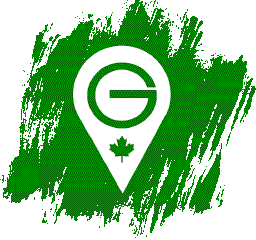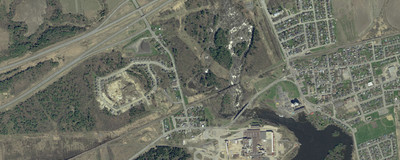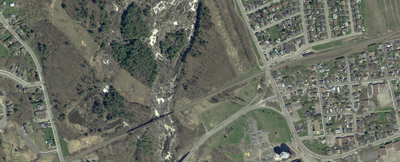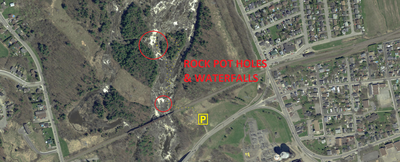|
This location has a series of small waterfalls, pools & pot holes.
Please note the updated information under Potential Risks. A rock Pothole is formed when sand, pebbles and small rocks are spun around on bedrock by river currents. As they spin they work like sandpaper and slowly start to grind away the softer rock. The result looks familiar to a pot hole. Once they are started they can vary in size from small to very large depending on the size of the bedrock and the amount of time the river current is strong enough to push the rocks. The action of the rocks swirling around in the pothole literally just "drills" down into the bedrock. In the process the stones and pebbles wear away at themselves as well as the bedrock until they are small enough to get out of the hole and they are replaced by other pebbles until the hole fills in or a stone breaks through the downstream side of the pothole. You can only expect to find potholes in rivers that have rocky beds, and most commonly only rivers where the rock is uniform, for example, limestone, granite or lava. Potholes do not form in rivers whose beds are covered with pebbles, silt or mud, so do not look for them in any lowland river. Geologists recognize two kinds of potholes in bedrock channels, vertical and lateral. Vertical potholes formed on rock surfaces that were at one time part of the channel's rock floor. These potholes are now exposed because that portion of the channel has been raised above the active river. Vertical potholes can be several meters deep and across. Viewed from the top, they are almost round and plunge nearly vertically into the rock. If you clear the hole of its accumulated debris, you might see at the bottom spoon like depressions separated from each other by water-smoothed ridges. Vertical potholes in Bedrock Rivers are thought to be formed by tight bundles or vortices of water during highly turbulent flood flow. These vortices pack a lot of energy and literally drill into the rock, sculpting it into smooth, attractive shapes. This observation allows us to conclude that the river was so shallow that the vortices brought on by the flood had touched bottom. The second kind, lateral potholes, tell very different stories. These potholes cut into the rocky sides of channels or into sides of rocks that stuck out of the channel as mini-islands. Lateral potholes appear lopsided, having rounded down-stream ends and narrowing upstream ends, somewhat resembling the shell of a garden snail. This asymmetry tells the direction of former flow. Lateral potholes commonly have an overhanging part and have shallow, simple basins, in contrast to the complex chambers of vertical potholes. Lateral potholes, once considered remains of broken vertical potholes, formed near the river's surface, where rock, water and air meet, instead of at the river bottom. Location ID #LS0025
|
|














